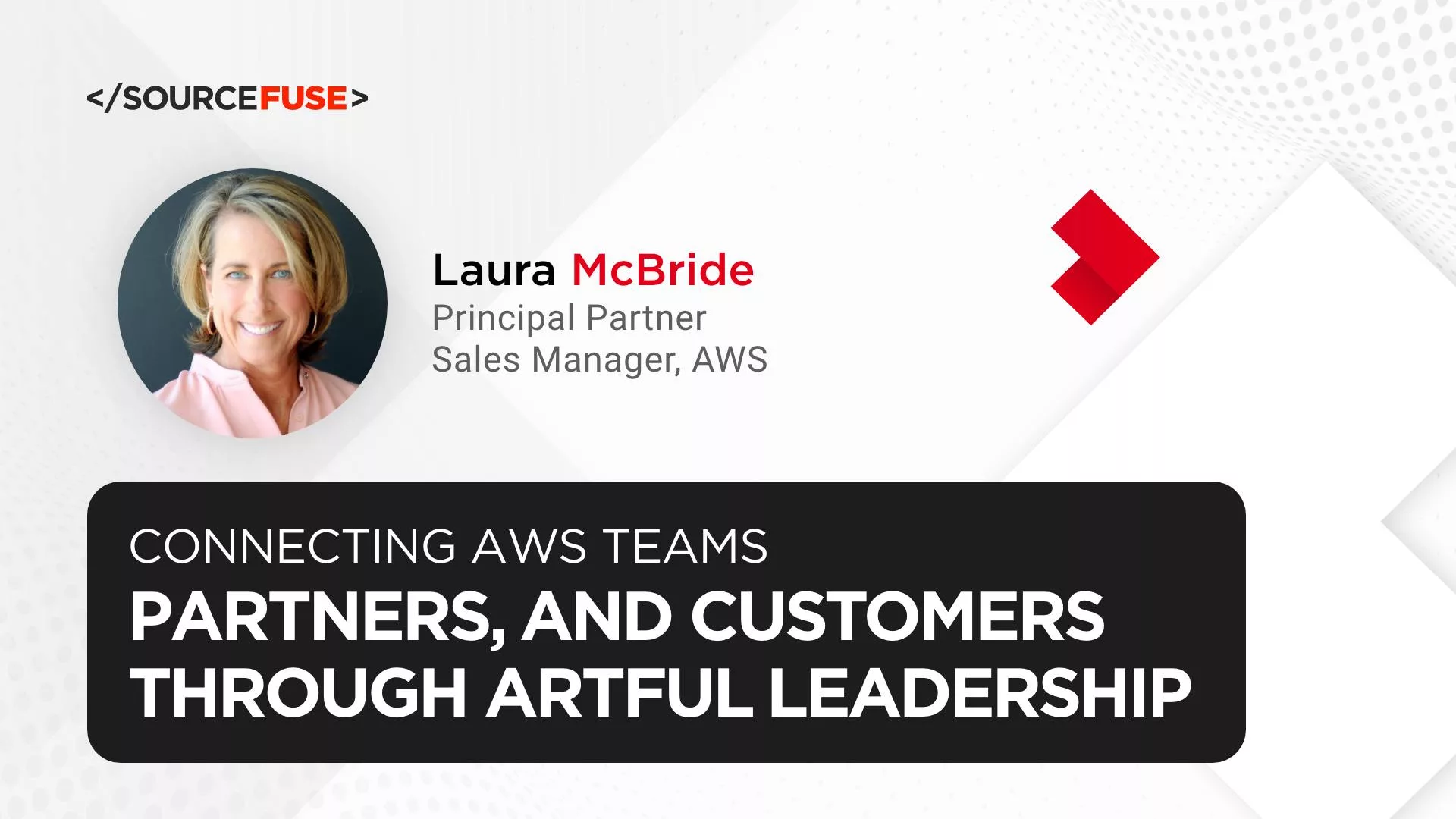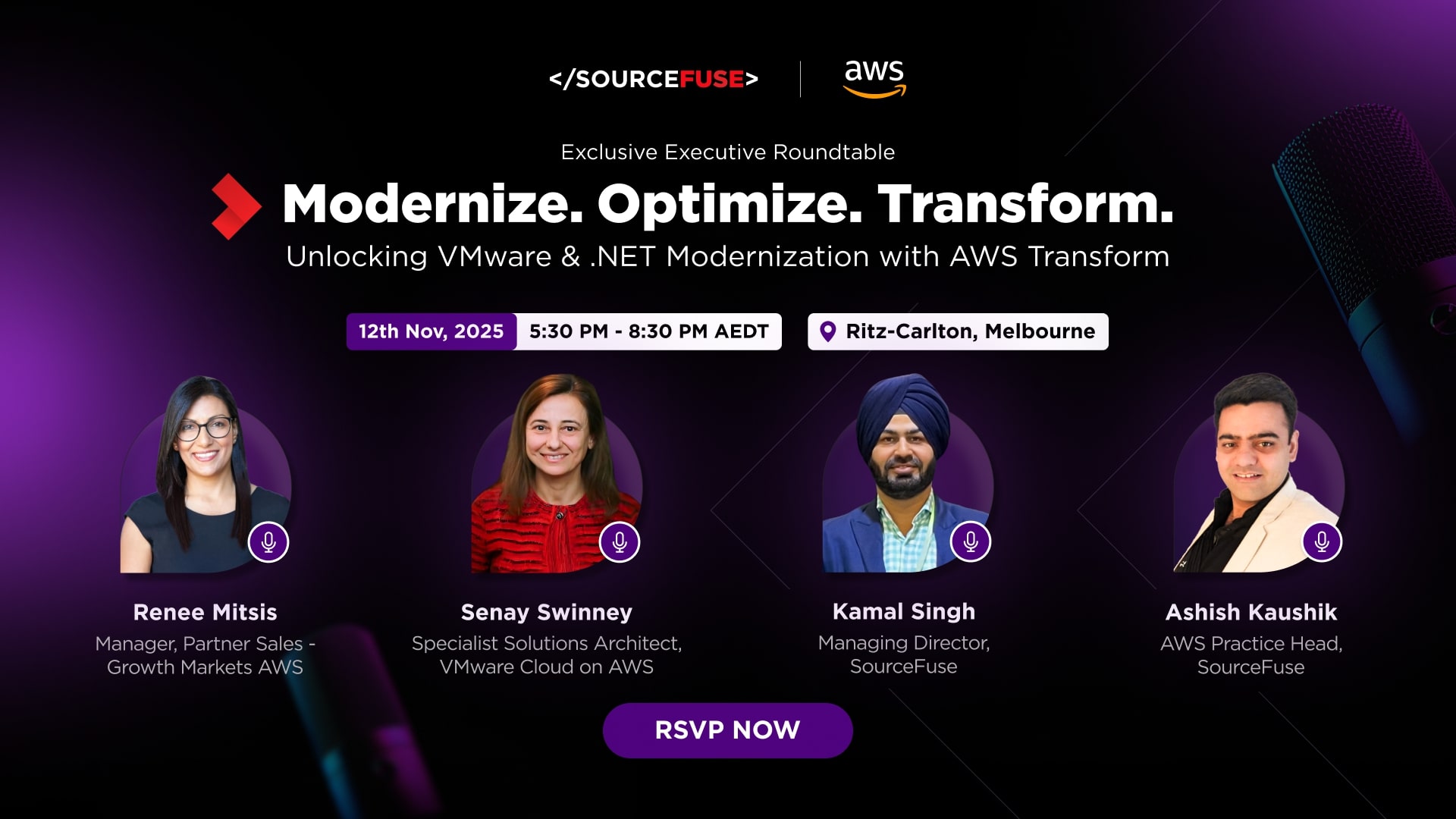“Great things in business are never done by one person. They’re done by a team of people”.
This famous Steve Jobs quote completely fits the theme of our recent edition of “Talking Out Cloud” – The Art of Collaboration! We threw some light on how Amazon Web Services (AWS), its Partner network, and sales teams collaborate in harmony, with our guest, Laura McBride, AWS Principal Partner Sales Manager and industry expert. With over two decades of invaluable experience, Laura shared her insights on leadership and the critical role she plays as the ‘bridge’ between AWS teams, customers and Partners.

#1 How do you define leadership and what do you do differently as a leader?
I often tell people that I’m in the fourth quarter of my career. I don’t plan to be in it forever, but every day is a wonderful opportunity to help people and learn. After all, we’re always learning, right?
I think the perspective inside of AWS is a bit different from most people’s. When I started this journey 8 years ago, I didn’t know anything about the cloud. I was with a Partner, part of a brand new venture, and I was learning everything from scratch. I remember the days when the AWS Partner Network was small, and now it’s grown significantly.
However, I do understand and have a clear perspective of what it’s like to be in the shoes of Partners working with AWS. It’s a massive company and can be challenging to navigate – it’s not the easiest place to figure out. But since I’m very familiar with the growth journey of Partners, whether they’re startups or midsize companies, this helps me to guide everyone in the right direction.
#2 What is your mantra for success?
Every day demands prioritization!
When I wake up and sit down at my computer, just diving into my inbox isn’t the recipe for a productive day. Understanding what today holds, what tomorrow brings, and how my actions today ripple into tomorrow and further next week is crucial. So, I make a conscious effort to prioritize my tasks every day, and ask myself, “What deserves most of my brainpower today?” This can be challenging because our plates are often overflowing with responsibilities.
I’ve developed a habit of blocking out time in my calendar. Generally, from 8:00 to 9:30 AM in the mornings, I reserve for administrative work, like responding to emails and handling tasks at the top of my list, such as funding requests. During this time, I don’t take calls, and I turn off all notifications. It’s my way of maintaining focus and tackling essential but less demanding tasks.
I also make sure to schedule an hour for lunch. In the remote work world, our schedules can get crazy, and it’s all too easy to forget about lunch or remain glued to the computer. I’ve realized the importance of stepping outside, taking a walk, and enjoying a meal away from the screen.
Plus, I’ve learned not to carry my phone during this break – it’s a distraction and only adds unnecessary stress. In a nutshell, it’s all about priorities. I firmly believe that prioritization is the linchpin to a productive and balanced workday.
#3 With the constantly emerging AWS Partner Programs, what positive changes have you noticed for the accounts you support?
The fact that we, as Amazonians, embrace this innovative builder mindset, always thinking about how we can reinvent and simplify things to make them better, is truly remarkable. For example, our Migration Acceleration Program (MAP), has undergone significant transformation; it started out by providing resources, and perhaps initially we provided funding without much scrutiny. However, we soon realized that to truly be customer-obsessed, we needed a structure with milestones and timelines to hold ourselves accountable.
I understand that these changes might not be easy from a Partner’s standpoint, but we always avoid excessive mid-year changes and implement most adjustments at the beginning of the calendar year, changes which have proven beneficial this year.
We strive to adhere to our processes more diligently and have been actively educating our Partners, like SourceFuse, to make better use of ‘tagging’ to ensure you receive due credit for the revenue generated by your projects.
All these seemingly minor adjustments ultimately benefit the customer in the long run. While change can be challenging, especially when there’s a lot of it, it’s reassuring to know that, here at Amazon, changes are typically well thought through before implementation. It’s a part of the Amazon culture that I appreciate.
#4 How do you see SourceFuse and AWS leading together?
My favorite part of what I do in this job is connecting people and networking. I get immense satisfaction from realizing that I have the opportunity to connect people in different teams and accelerate innovation.
I genuinely love the fact that I’ve had the opportunity to know SourceFuse as an organization better. I’m continually learning more about the individuals within your organization, what they do, and how to connect them with people within Amazon to enhance our partnership. After all, the goal is to go to market in a smart way. Understanding SourceFuse’s go-to-market plan has made me more aware of where they need to be plugged in or what sets them apart from other Partners.
One of the things I’ve really appreciated about SourceFuse is your quick responsiveness. In my segment, particularly Greenfield (formerly known as SMB Greenfield), where we deal with the smallest customers that haven’t spent much on us, responsiveness is crucial. Our sellers are incentivized to grow customers and move them to the next level.
I’ve also found that SourceFuse is capable of swiftly and effectively moving workloads to the cloud, regardless of the customer’s size, which is fantastic. It’s been a wonderful experience collaborating with the SourceFuse team and getting to know everyone while figuring out what’s working and what’s not.
#5 What do you think will be the ‘next big thing’ in the industry?
There’s a lot of buzz around GenAI, and from our standpoint I’d like to emphasize that GenAI presents unique challenges. We need Partners who can migrate databases to the cloud and then layer on GenAI capabilities. In our particular segment, discussing buzzwords like GenAI is a bit different in terms of the go-to-market approach.
Firstly, our customers often don’t fully grasp the concept, and secondly, they’re primarily focused on transitioning to the cloud and moving away from on-premises and data centers. It doesn’t mean that discussing GenAI has to be postponed for a year or more – we can certainly have these conversations alongside database migration discussions. However, many of our customers still rely on legacy databases that require a large-scale cloud migration, and there aren’t many Partners capable of handling this transition effectively.
I wanted to bring this up because it’s crucial to remember that not everyone is ready for GenAI. We need to understand that if we’re not even in the cloud yet, the entire concept can seem overwhelming. Nevertheless, it’s a significant and critical topic. Partners and customers will eventually have conversations that help demystify Gen AI.
